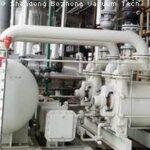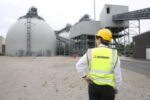Atlas Copco to acquire Chinese manufacturer of liquid ring pumps and systems
Atlas Copco has agreed to acquire the assets of Shandong Bozhong Vacuum Technology Co., Ltd, a company that develops and manufactures liquid ring vacuum pumps and systems. Shandong Bozhong Vacuum Technology was founded in 2002 and is located in Zhangdian District, Zibo, Shandong province, China. In 2021, they had revenues of approximately 90 MCNY (120 MSEK*). The company has 116 employees, and a broad customer base in the chemical and pharmaceutical industries in China as well as globally. “Shandong Bozhong Vacuum Technology is an experienced manufacturing and machining company,” said Geert Follens, Business Area President Vacuum Technique. “This acquisition adds a company with good reputation for their high-quality standards and aligns with our local-for-local strategy.” The acquisition is expected to close in Q1, 2023. The purchase price is not disclosed. The acquired business will become part of the Industrial Vacuum Division within the Vacuum Technique Business Area.










